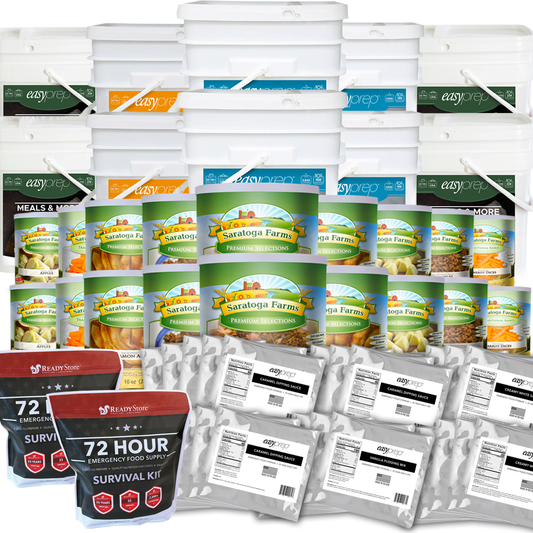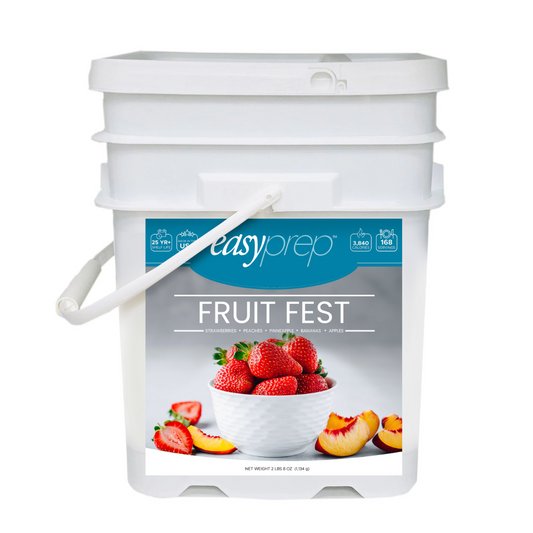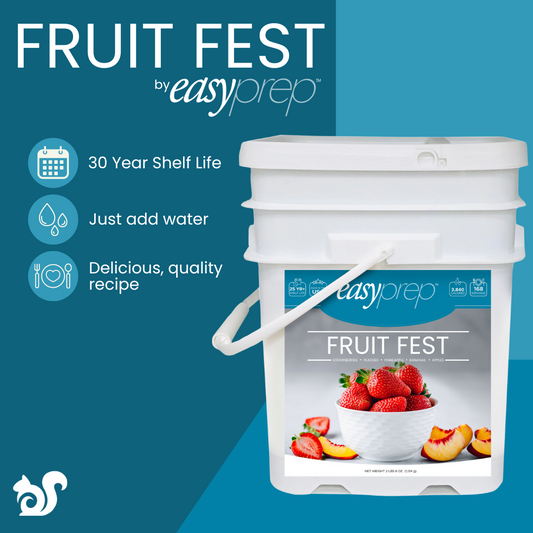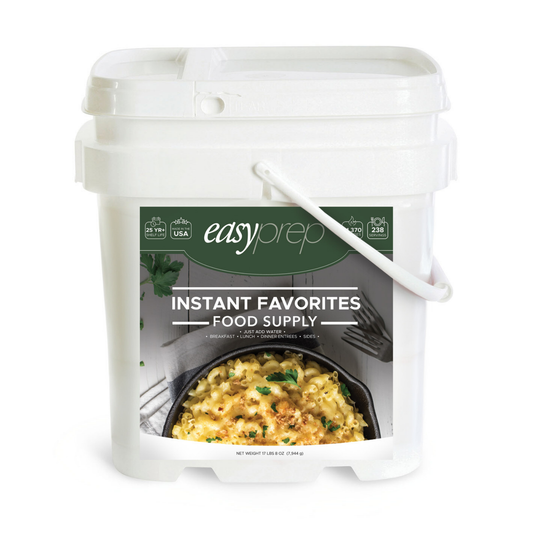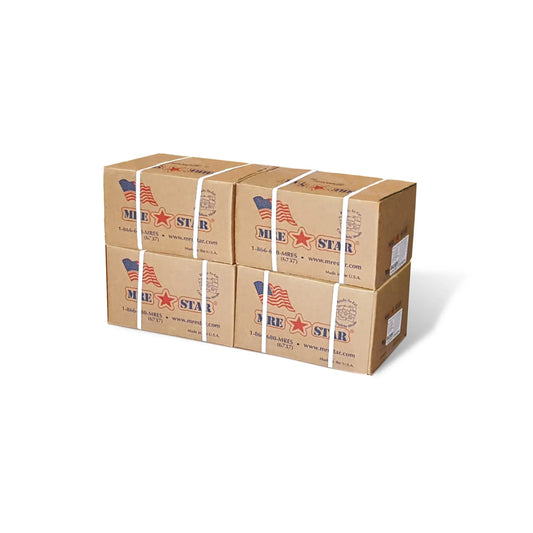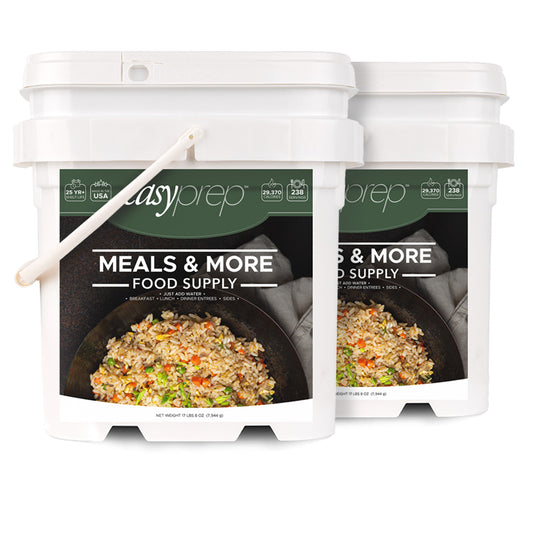Should You Raise Turkeys?
22 Nov 2014
Raising turkeys can be a great way to become a little more self-reliant and show your independent spirit around the holiday times.
While they are fairly easy to raise and similar to raising chickens, there are some differences, especially when they are young, that you’ll need to consider. You’ll have to consider how much space the turkeys will take, what breeds you should have, the cost of feeding and water and what you’ll end up doing with the turkey.
Turkeys are a great way to be more self reliant!
What Breed?
There are a few different options to start out raising turkeys. One of the most common small-farm turkeys is the broad-breasted white - the “modern” version. They are the most common ones that you’ll find in grocery store. They do present some problems on a smaller homesteading scale; for example, they don’t walk well, they can’t fly, are prone to more diseases and can’t reproduce. For that reason, they are ideal for mass production but might not be the best option for homesteaders.
Most homesteaders and self-sufficient families will raise Heritage turkey breeds.
Bourbon Reds. Bourbon Reds have a fuller flavor than most turkeys and are considered one of the best tasting turkeys around. The toms will typically be around 20 lbs while the hens will usually reach 12 lbs. They get their name because of their amazing red feathers, which is one of the ways you can tell them apart.
Narragansett. This breed was very popular back in the day in New England. They typically reach 30 lbs for toms and 18 lbs for hens.
Midget White. This is a relatively new breed known for its deep flavor. They are a cross between Royal Palm and Broad-Breasted Whites. Toms weigh about 18 lbs while hens weigh 10 lbs.
 Beltsville Small White. These are roughly the same size as the Midget Whites but have a bigger breast. They might not have as much flavor as other Heritage turkeys but they repopulate very well. They are very social.
White Holland. Originally from Holland, these turkeys immigrated to the United States in the early colonial period and were very popular in the 1800s. They weigh up to 30 lbs with the toms and up to 20 lbs for the hens. They are good sitters and mothers but because of their big size, they can sometimes break the eggs with their weight.
Standard Bronze. This is truly the American Turkey. It’s a cross between the turkeys brought by Europeans to the Americas and the wild turkeys that were discovered here. While their popularity was very prolific back in the day, they have primarily been bred artificially since the 1960s. At the time, they were replaced in popularity with the Broad-Breasted White turkey because it’s feathers were cleaner looking.
Royal Palm. These black and white turkeys were originally bred for their feathers because they are a lot smaller than other turkeys. However, if you’re raising them on a homestead or just for your family, they might be the perfect size. They are good fliers and forage a lot. The toms usually reach 16 lbs and the hens typically reach 10 lbs.
How Many?
If you’re raising turkeys for meat, you’ll have to plan on how frequently you’ll be slaughtering them. The process is very similar to slaughtering chickens. If your breeding turkeys year over year, you’ll want to have 1 tom for every 10 hens. The flock will naturally grow in the spring time.
Space Requirements
Most homesteaders will allow turkeys to live outside on range-style fenced pen. You can be creative with your pen but you’ll need to make sure that it:
• Offers protection from predators
• Has access for them to range
• Has roosts for them to fly up into at night
• A place to dust bathe
• Offers about 75 square feet for up to 12 turkeys
The range will typically offer some housing and have a fenced off section that is movable. This allows you to control where your turkeys stay while also allowing them to roam at will.
It’s best to keep your turkeys (or turkey pen) on grass that’s four to six inches long. People will usually use woven wire fencing in their pen. The fence will need to be about four feet high because the turkeys can (and will) fly. You can trim the wings of the turkeys or top the area with netting to prevent them from flying away.
If you’re planning on breeding turkeys, you’ll need a permanent housing structure where they can lay eggs. You’ll need to ensure that the toms and hens are separated at certain times of the year too.
Feeding and Watering
When the turkeys are young, you’ll have to be careful with how your feeding and watering is distributed. When they’re young, provide water in smaller dishes. Many times the young poults will fall into buckets or pans of water, getting chilled and dieing, sometimes even drowning.
A small chicken feeder is ideal for poults. It allows them to reach their beaks in for food without spreading food all around and fighting other birds for space.
Once they grow, you’ll still want to avoid open containers of feed and water. Look for a sturdy feeding system since the birds are pretty strong. Most people would recommend a hanging feeder that doesn’t sit on the ground and allows turkeys to reach their necks up and eat are ideal. They tend to be cleaner and save you money on feed.
Most turkeys will also eat insects and other creatures while they’re foraging. You’ll notice that many of the turkeys will also eat rough sand or fine gravel. This is to help them digest their food. Typically, they’ll find that mix in the open pen, but you’ll want to make sure that they have access to some if they seem sick.
Preventing Problems
If you follow the ideas we’ve mentioned above, you should avoid a lot of diseases and health concerns with your turkeys.
The moveable pen along with fresh, clean water and food will help your turkeys stave off any diseases. Be sure to check the turkeys for feather losses or sickly-looking conditions on a frequent basis to make sure your flock is healthy.
If turkeys aren’t being fed well enough, don’t have enough space or are overheated, they will begin to sicken. Sometimes turkey flocks even result to cannibalism when they’re overheated!
If you do find diseases or other issues, most veterinarians will have advice or medicine that can help your flock.
Your Recommendations?
What do you think? Have you raised turkeys and have advice for others before they get started? Comment below and tell others what they need to know.
Beltsville Small White. These are roughly the same size as the Midget Whites but have a bigger breast. They might not have as much flavor as other Heritage turkeys but they repopulate very well. They are very social.
White Holland. Originally from Holland, these turkeys immigrated to the United States in the early colonial period and were very popular in the 1800s. They weigh up to 30 lbs with the toms and up to 20 lbs for the hens. They are good sitters and mothers but because of their big size, they can sometimes break the eggs with their weight.
Standard Bronze. This is truly the American Turkey. It’s a cross between the turkeys brought by Europeans to the Americas and the wild turkeys that were discovered here. While their popularity was very prolific back in the day, they have primarily been bred artificially since the 1960s. At the time, they were replaced in popularity with the Broad-Breasted White turkey because it’s feathers were cleaner looking.
Royal Palm. These black and white turkeys were originally bred for their feathers because they are a lot smaller than other turkeys. However, if you’re raising them on a homestead or just for your family, they might be the perfect size. They are good fliers and forage a lot. The toms usually reach 16 lbs and the hens typically reach 10 lbs.
How Many?
If you’re raising turkeys for meat, you’ll have to plan on how frequently you’ll be slaughtering them. The process is very similar to slaughtering chickens. If your breeding turkeys year over year, you’ll want to have 1 tom for every 10 hens. The flock will naturally grow in the spring time.
Space Requirements
Most homesteaders will allow turkeys to live outside on range-style fenced pen. You can be creative with your pen but you’ll need to make sure that it:
• Offers protection from predators
• Has access for them to range
• Has roosts for them to fly up into at night
• A place to dust bathe
• Offers about 75 square feet for up to 12 turkeys
The range will typically offer some housing and have a fenced off section that is movable. This allows you to control where your turkeys stay while also allowing them to roam at will.
It’s best to keep your turkeys (or turkey pen) on grass that’s four to six inches long. People will usually use woven wire fencing in their pen. The fence will need to be about four feet high because the turkeys can (and will) fly. You can trim the wings of the turkeys or top the area with netting to prevent them from flying away.
If you’re planning on breeding turkeys, you’ll need a permanent housing structure where they can lay eggs. You’ll need to ensure that the toms and hens are separated at certain times of the year too.
Feeding and Watering
When the turkeys are young, you’ll have to be careful with how your feeding and watering is distributed. When they’re young, provide water in smaller dishes. Many times the young poults will fall into buckets or pans of water, getting chilled and dieing, sometimes even drowning.
A small chicken feeder is ideal for poults. It allows them to reach their beaks in for food without spreading food all around and fighting other birds for space.
Once they grow, you’ll still want to avoid open containers of feed and water. Look for a sturdy feeding system since the birds are pretty strong. Most people would recommend a hanging feeder that doesn’t sit on the ground and allows turkeys to reach their necks up and eat are ideal. They tend to be cleaner and save you money on feed.
Most turkeys will also eat insects and other creatures while they’re foraging. You’ll notice that many of the turkeys will also eat rough sand or fine gravel. This is to help them digest their food. Typically, they’ll find that mix in the open pen, but you’ll want to make sure that they have access to some if they seem sick.
Preventing Problems
If you follow the ideas we’ve mentioned above, you should avoid a lot of diseases and health concerns with your turkeys.
The moveable pen along with fresh, clean water and food will help your turkeys stave off any diseases. Be sure to check the turkeys for feather losses or sickly-looking conditions on a frequent basis to make sure your flock is healthy.
If turkeys aren’t being fed well enough, don’t have enough space or are overheated, they will begin to sicken. Sometimes turkey flocks even result to cannibalism when they’re overheated!
If you do find diseases or other issues, most veterinarians will have advice or medicine that can help your flock.
Your Recommendations?
What do you think? Have you raised turkeys and have advice for others before they get started? Comment below and tell others what they need to know.
 |
 |
|||
 Beltsville Small White. These are roughly the same size as the Midget Whites but have a bigger breast. They might not have as much flavor as other Heritage turkeys but they repopulate very well. They are very social.
White Holland. Originally from Holland, these turkeys immigrated to the United States in the early colonial period and were very popular in the 1800s. They weigh up to 30 lbs with the toms and up to 20 lbs for the hens. They are good sitters and mothers but because of their big size, they can sometimes break the eggs with their weight.
Standard Bronze. This is truly the American Turkey. It’s a cross between the turkeys brought by Europeans to the Americas and the wild turkeys that were discovered here. While their popularity was very prolific back in the day, they have primarily been bred artificially since the 1960s. At the time, they were replaced in popularity with the Broad-Breasted White turkey because it’s feathers were cleaner looking.
Royal Palm. These black and white turkeys were originally bred for their feathers because they are a lot smaller than other turkeys. However, if you’re raising them on a homestead or just for your family, they might be the perfect size. They are good fliers and forage a lot. The toms usually reach 16 lbs and the hens typically reach 10 lbs.
How Many?
If you’re raising turkeys for meat, you’ll have to plan on how frequently you’ll be slaughtering them. The process is very similar to slaughtering chickens. If your breeding turkeys year over year, you’ll want to have 1 tom for every 10 hens. The flock will naturally grow in the spring time.
Space Requirements
Most homesteaders will allow turkeys to live outside on range-style fenced pen. You can be creative with your pen but you’ll need to make sure that it:
• Offers protection from predators
• Has access for them to range
• Has roosts for them to fly up into at night
• A place to dust bathe
• Offers about 75 square feet for up to 12 turkeys
The range will typically offer some housing and have a fenced off section that is movable. This allows you to control where your turkeys stay while also allowing them to roam at will.
It’s best to keep your turkeys (or turkey pen) on grass that’s four to six inches long. People will usually use woven wire fencing in their pen. The fence will need to be about four feet high because the turkeys can (and will) fly. You can trim the wings of the turkeys or top the area with netting to prevent them from flying away.
If you’re planning on breeding turkeys, you’ll need a permanent housing structure where they can lay eggs. You’ll need to ensure that the toms and hens are separated at certain times of the year too.
Feeding and Watering
When the turkeys are young, you’ll have to be careful with how your feeding and watering is distributed. When they’re young, provide water in smaller dishes. Many times the young poults will fall into buckets or pans of water, getting chilled and dieing, sometimes even drowning.
A small chicken feeder is ideal for poults. It allows them to reach their beaks in for food without spreading food all around and fighting other birds for space.
Once they grow, you’ll still want to avoid open containers of feed and water. Look for a sturdy feeding system since the birds are pretty strong. Most people would recommend a hanging feeder that doesn’t sit on the ground and allows turkeys to reach their necks up and eat are ideal. They tend to be cleaner and save you money on feed.
Most turkeys will also eat insects and other creatures while they’re foraging. You’ll notice that many of the turkeys will also eat rough sand or fine gravel. This is to help them digest their food. Typically, they’ll find that mix in the open pen, but you’ll want to make sure that they have access to some if they seem sick.
Preventing Problems
If you follow the ideas we’ve mentioned above, you should avoid a lot of diseases and health concerns with your turkeys.
The moveable pen along with fresh, clean water and food will help your turkeys stave off any diseases. Be sure to check the turkeys for feather losses or sickly-looking conditions on a frequent basis to make sure your flock is healthy.
If turkeys aren’t being fed well enough, don’t have enough space or are overheated, they will begin to sicken. Sometimes turkey flocks even result to cannibalism when they’re overheated!
If you do find diseases or other issues, most veterinarians will have advice or medicine that can help your flock.
Your Recommendations?
What do you think? Have you raised turkeys and have advice for others before they get started? Comment below and tell others what they need to know.
Beltsville Small White. These are roughly the same size as the Midget Whites but have a bigger breast. They might not have as much flavor as other Heritage turkeys but they repopulate very well. They are very social.
White Holland. Originally from Holland, these turkeys immigrated to the United States in the early colonial period and were very popular in the 1800s. They weigh up to 30 lbs with the toms and up to 20 lbs for the hens. They are good sitters and mothers but because of their big size, they can sometimes break the eggs with their weight.
Standard Bronze. This is truly the American Turkey. It’s a cross between the turkeys brought by Europeans to the Americas and the wild turkeys that were discovered here. While their popularity was very prolific back in the day, they have primarily been bred artificially since the 1960s. At the time, they were replaced in popularity with the Broad-Breasted White turkey because it’s feathers were cleaner looking.
Royal Palm. These black and white turkeys were originally bred for their feathers because they are a lot smaller than other turkeys. However, if you’re raising them on a homestead or just for your family, they might be the perfect size. They are good fliers and forage a lot. The toms usually reach 16 lbs and the hens typically reach 10 lbs.
How Many?
If you’re raising turkeys for meat, you’ll have to plan on how frequently you’ll be slaughtering them. The process is very similar to slaughtering chickens. If your breeding turkeys year over year, you’ll want to have 1 tom for every 10 hens. The flock will naturally grow in the spring time.
Space Requirements
Most homesteaders will allow turkeys to live outside on range-style fenced pen. You can be creative with your pen but you’ll need to make sure that it:
• Offers protection from predators
• Has access for them to range
• Has roosts for them to fly up into at night
• A place to dust bathe
• Offers about 75 square feet for up to 12 turkeys
The range will typically offer some housing and have a fenced off section that is movable. This allows you to control where your turkeys stay while also allowing them to roam at will.
It’s best to keep your turkeys (or turkey pen) on grass that’s four to six inches long. People will usually use woven wire fencing in their pen. The fence will need to be about four feet high because the turkeys can (and will) fly. You can trim the wings of the turkeys or top the area with netting to prevent them from flying away.
If you’re planning on breeding turkeys, you’ll need a permanent housing structure where they can lay eggs. You’ll need to ensure that the toms and hens are separated at certain times of the year too.
Feeding and Watering
When the turkeys are young, you’ll have to be careful with how your feeding and watering is distributed. When they’re young, provide water in smaller dishes. Many times the young poults will fall into buckets or pans of water, getting chilled and dieing, sometimes even drowning.
A small chicken feeder is ideal for poults. It allows them to reach their beaks in for food without spreading food all around and fighting other birds for space.
Once they grow, you’ll still want to avoid open containers of feed and water. Look for a sturdy feeding system since the birds are pretty strong. Most people would recommend a hanging feeder that doesn’t sit on the ground and allows turkeys to reach their necks up and eat are ideal. They tend to be cleaner and save you money on feed.
Most turkeys will also eat insects and other creatures while they’re foraging. You’ll notice that many of the turkeys will also eat rough sand or fine gravel. This is to help them digest their food. Typically, they’ll find that mix in the open pen, but you’ll want to make sure that they have access to some if they seem sick.
Preventing Problems
If you follow the ideas we’ve mentioned above, you should avoid a lot of diseases and health concerns with your turkeys.
The moveable pen along with fresh, clean water and food will help your turkeys stave off any diseases. Be sure to check the turkeys for feather losses or sickly-looking conditions on a frequent basis to make sure your flock is healthy.
If turkeys aren’t being fed well enough, don’t have enough space or are overheated, they will begin to sicken. Sometimes turkey flocks even result to cannibalism when they’re overheated!
If you do find diseases or other issues, most veterinarians will have advice or medicine that can help your flock.
Your Recommendations?
What do you think? Have you raised turkeys and have advice for others before they get started? Comment below and tell others what they need to know.


